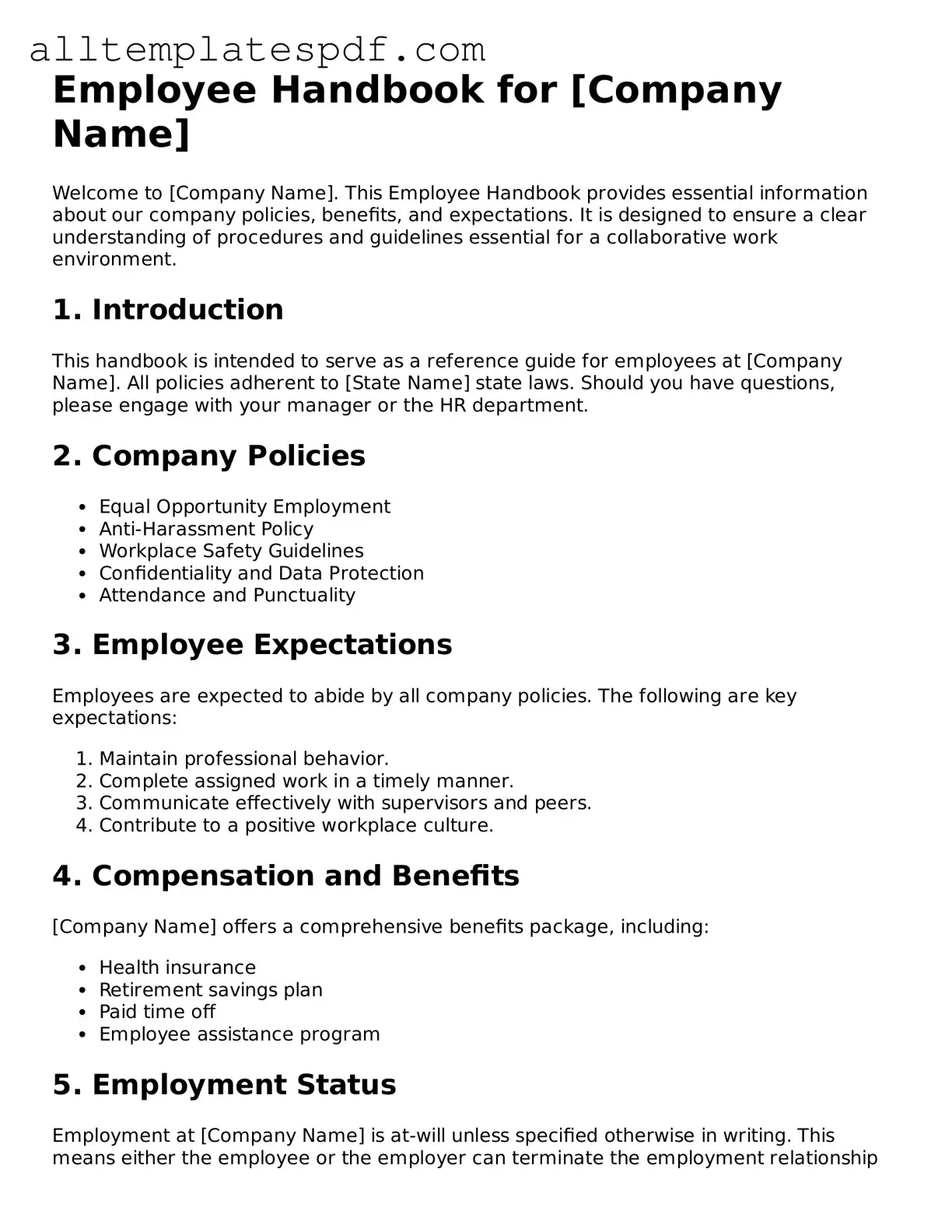Filling out the Employee Handbook form can seem straightforward, but many people stumble over common pitfalls. One frequent mistake is rushing through the process. When individuals hurry, they often overlook important sections or fail to read the instructions carefully. Taking the time to understand each part of the form can prevent errors that might lead to confusion later on.
Another common error is neglecting to provide accurate personal information. This includes your name, address, and contact details. If these are incorrect, it can create issues down the line, especially when it comes to communication from your employer. Always double-check your entries for accuracy.
Some people forget to sign and date the form. It might seem trivial, but without a signature, the document may not be considered valid. This simple oversight can result in delays or complications in your employment process. Make it a habit to review your form for completeness before submission.
In addition, failing to read the handbook itself can lead to misunderstandings about company policies. The handbook often contains vital information regarding your rights and responsibilities. Skimming through it might cause you to miss important details that affect your job. Take the time to familiarize yourself with the content.
Another mistake is not asking questions when something is unclear. If you don’t understand a section, it’s better to seek clarification than to guess. Employers appreciate when employees take the initiative to ensure they are informed and compliant with company policies.
Many people also overlook the importance of keeping a copy of the completed form. Having a personal record can be helpful if any discrepancies arise later. It serves as a reference point for you and can aid in resolving any potential issues.
Some individuals fail to update their information when changes occur. Life happens, and your personal details may change over time. Always remember to inform your employer of any updates to ensure that your records are current and accurate.
Lastly, many forget to review the form for grammatical or typographical errors. While these may seem minor, they can reflect poorly on your attention to detail. A clean, well-presented form shows professionalism and respect for the process. Taking a few extra moments to proofread can make a significant difference.
